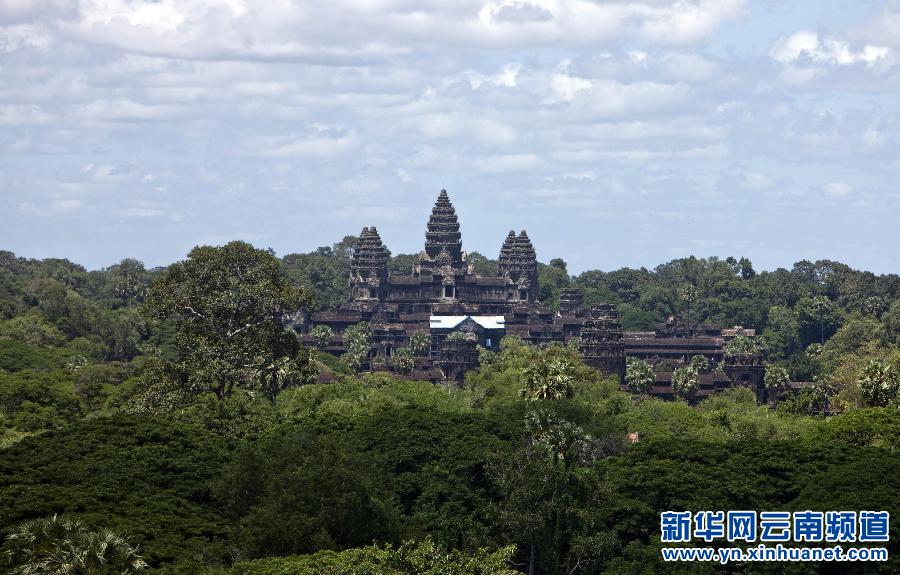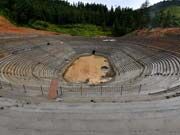


Angkor Wat(File photo)
Think heritage protection, and the restoration and conservation of historic sites comes to mind. Crowd control and on-site monitoring to limit visitor numbers are also common measures.
Now China's eyes in the sky are providing a new level of protection for the ruins of Cambodia's Angkor Wat, the magnificent temple of the Khmer Empire, which faces inundation by tourists and environmental dangers.
Chinese satellites are using remote sensing to collect and process images of the site in real time.
The technology offers particular advantages in instantly observing and analyzing the effects of natural disasters.
"Basically, we have eyes in the sky and we can see what happens to the ancient temples and their environment immediately," says Hong Tianhua, deputy director and secretary general of the International Centre on Space Technologies for Natural and Cultural Heritage under the Auspices of UNESCO (HIST).
HIST is the first and only institute in the world to use remote sensing technology to preserve cultural heritage sites under UNESCO.
A memorandum of understanding, signed by the Institute of Remote Sensing and Digital Earth (RADI) of China, Chinese Academy of Sciences (CAS), HIST and Cambodia' s Authority for the Protection and Management of Angkor and the Region of Siem Reap (APSARA) in 2014, enables cooperation in the use of Chinese satellite data.
China then started to help APSARA build a ground station to receive and share the data.
It also helped provide training in the technology to managers and researchers of world heritage sites from 12 developing countries in Asia and Africa, including Cambodia, through international workshops.
Trained staff can now compare new data with that collected in the past to identify any abnormal changes, providing a scientific basis for decision-making, says Hong.
They can also create 3D visualization of large sites for analysis.
"For the first time ever, our systems are monitoring the temples and their neighboring mountains and rivers. Those temples are sacred places for locals and mean a lot to them. They are grateful and we are proud to help," he says.
UNESCO has been helping the preservation and rebuilding of Angkor Wat since the 1980s. In 1992, Angkor Wat was listed as a World Heritage site.
China began helping with the restoration of the ruins of Angkor in 2000 together with more than 20 countries. Most of the 98 temples were completed by 2013.
"The restoration took a lot of time and effort as the temples were built with stone. Specific stones of the same type and size were required to preserve the originality of the architecture", says Hong.
More tourist facilities had been built to cater for the huge number of visitors and underground water was collected, while the natural environment of Angkor was destroyed by logging activities.
"We noticed, through the 'sky eyes' system, that forests to the north of the heritage site are decreasing as hotels mushroom, and underground water levels are falling. We have reported the discoveries to the site managing authorities for them to deal with,"says Hong.
HIST has been considering extending the three-year agreement with APSARA. It is also ready to help to preserve more world heritage sites.
"Since the Belt and Road Initiative was announced by President Xi Jinping last year, cultural exchanges and cooperation among different member countries and China are ready to develop. The world heritage sites on the Silk Road are our top priorities."
Day|Week

 Largest bullring for Dong people built to accommodate 50,000 people
Largest bullring for Dong people built to accommodate 50,000 people Chinese people go crazy about the swimming champion Ning Zetao
Chinese people go crazy about the swimming champion Ning Zetao Photos of a BFA sophomore go viral online
Photos of a BFA sophomore go viral online PLA type 96A tanks race in "Tank biathlon" in Moscow
PLA type 96A tanks race in "Tank biathlon" in Moscow 30 historic and cultural neighborhoods to visit in China
30 historic and cultural neighborhoods to visit in China Marking the 70th anniversary of Hiroshima atomic bombing
Marking the 70th anniversary of Hiroshima atomic bombing Final of 2015 Miss Weihai Tourism concludes
Final of 2015 Miss Weihai Tourism concludes Cosplay model at ChinaJoy: photo story
Cosplay model at ChinaJoy: photo story